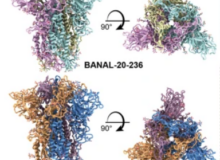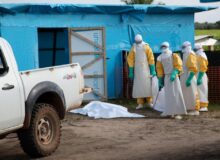Jonathan Latham, PhD and Allison Wilson, PhD
Gore Vidal once wrote that “I told you so,” is the most satisfying sentence in the English language. If so, then the imminent launch of Monsanto’s Roundup Ready 2 Yield soybean line is going to provide a lot of satisfaction, though not to supporters of Monsanto. The role of the new glyphosate-resistant line (insertion event MON88978) in the following story is to provide a single, but highly significant, new data point.

The new Roundup Ready 2 Yield line will supercede Monsanto’s original Roundup Ready transgenic soybean (event 40-3-2) and yet it confers the exact same trait and contains the exact same gene as Roundup Ready. So why would Monsanto feel the need, probably at substantial cost, to replace the original Roundup Ready?
A big clue, along with the advertising, is the name. Monsanto claims that Roundup Ready 2 Yield produces a 7-11% superior yield than the original Roundup Ready. This ought to be rather surprising since herbicide resistance is not a yield trait. But the answer is in fact simple: the introduction of Roundup Ready 2 Yield is an admission that the original Roundup Ready had a major yield drag, one of several unanticipated consequences of this insertion event.
What we argued
Many groups and individuals have argued that transgenic plants may be prone to unanticipated consequences, either due to pleiotropy or to effects of transgene insertion (Schubert 2002). Our review papers on the molecular characteristics of transgene insertion sites and the associated genetic consequences of plant transformation techniques provided the first, and still only, review of the mutagenic nature of plant transformation and the consequences for the biosafety of transgenic plants (Wilson et al. 2006; Latham et al. 2006).
Our analysis reached two principal conclusions. The first was that transgene insertions, especially those resulting from particle bombardment, are frequently complex and frequently disruptive, often of multiple coding regions. Secondly, current plant transformation techniques are typically associated with very large numbers of mutations, some of which will inevitably be closely linked to the transgene and therefore hard to separate genetically. Based on these observations we speculated that unanticipated phenotypic consequences were likely to be associated with transgenic plants, and furthermore, that these would sometimes be deleterious or otherwise harmful (see Nature Biotechnology correspondence Bradford et al. 2005; Wilson et al. 2006; Latham et al. 2006).
At the time, a frequent response from regulators, and others, was that, nevertheless, transgene insertion sites and/or linked mutations, were unlikely to result in phenotypic consequences of any significance. This point has been argued in print by Bradford et al. (2005), Altpeter et al. (2005) and Schouten and Jacobsen (2007).
The unanticipated traits of Roundup Ready soybean (event 40-3-2)
Launched in 1996, Roundup Ready soybeans, which express an enol pyruvate shikimate-3-phosphate synthase (EPSPS) gene from the microbe Agrobacterium tumefaciens (and contain no other transgenes), have been an undoubted commercial success. However, they have been controversial, both because of complaints from farmers and because of revelations of unanticipated physiological consequences. These have included stem splitting and probably lignin overproduction (Coghlan, 1999; Gertz and Vencill 1999), small seed size and a yield drag (Elmore et al. 2001; Nelson et al. 2002; Benbrook 1999; Gordon 2007), and last but certainly not least, a significant manganese (Mn) deficiency (Gordon 2007).
Two powerful arguments together suggest that of these unanticipated traits, the manganese deficiency and the yield drag, are caused specifically by the 40-3-2 insertion event, which is contained in all current commercial Roundup Ready soybeans. First, even though the 40-3-2 insertion event has been backcrossed into hundreds of soybean cultivars, Monsanto has consistently failed to separate the unanticipated traits from the transgene, suggesting that they are extremely closely linked to, or inseparable from, the actual site of insertion. This fact alone still allows, however, the possibility that the action of the EPSPS protein might be responsible for the unanticipated traits. The introduction of Roundup Ready 2 Yield, however, suggests that this is not the case. Although Roundup Ready 2 Yield contains different transgene promoter and termination sequences from Roundup Ready, the transgene product, the bacterial EPSPS protein, is identical in sequence (USDA petition 06-178-01p). Nevertheless, according to the same petition, Roundup Ready 2 Yield yields 7-11% over Roundup Ready, which just happens to approximate to the yield penalty that researchers have suggested Roundup Ready confers.
The learning curve
In principle, much could be learned from this story. The first, and perhaps the most significant, is to lay to rest the notion that unintended traits in transgenic plants are invariably unimportant and rare. Not only is 95% of the soybean crop of the United States currently yielding 7-11% less than it should, Roundup Ready soybeans can contain less than 40% of the Mn contained in isogenic lines (Gordon, 2007). Neither of these traits can reasonably be called insignificant.
Secondly, the original petition for Roundup Ready soybeans inadequately analysed the transgenic line prior to commercial approval. As was subsequently shown, the 40-3-2 insertion site of Roundup Ready had a complex and scrambled insertion site and a non-functional transcription termination sequence, which allowed aberrant transcripts to transcribe beyond the transgene and into scrambled DNA (Hernandez et al. 2003; Rang et al. 2005; Wilson et al. 2006). Additionally, the compositional and phenotypic analyses, which were supposed to demonstrate the identity of Roundup Ready to conventional soybeans, omitted important data points. Thus, the petition failed entirely to detect a deficiency in a major nutrient (Mn) as well as the assorted agronomic defects of Roundup Ready soybeans. Attention to any one of these data gaps might have alerted regulators to the problems.
Now available for public inspection is the Monsanto petition for Roundup Ready 2 Yield (USDA petition 06-178-01p). Monsanto, it appears, has learned from some of the mistakes of Roundup Ready. They have replaced the nos terminator, they have also avoided callus culture and instead used meristem culture, which should be much less mutagenic, and also transformed this time with Agrobacterium tumefaciens rather than particle bombardment.
For regulators, however, the learning curve is conspicuous by its absence. Regulators in the USA, the EU and China, as well as elsewhere have already approved Roundup Ready 2 Yield, even though the petition is again flawed. The petition again fails to present a DNA sequence for the insertion site or to analyse DNA flanking the insertion site; it fails to search for aberrant mRNA transcripts; and perhaps most remarkably, its compositional analysis fails to measure even a single mineral nutrient.
Of particular interest to us, the petition also demonstrates that the new Roundup Ready 2 Yield soybean has its own unanticipated plant trait: Roundup Ready 2 Yield plants are consistently 5% shorter than isogenic lines. Evidently, the regulators who have approved Roundup Ready 2 Yield (including the famously ‘stringent’ EU) have agreed with Monsanto’s conclusion that there is “no biological meaning” to this difference (USDA petition 06-178-01p). To us, however, this difference has, in fact, two biological meanings. On a practical level, as any farmer could have pointed out, crop stature is an important agronomic trait: as well as being typically an important weed suppression character; plant stature is important in mechanical harvesting; and also for disease susceptibility, where ground contact and foliage positioning affect in-crop humidity. Secondly, many commercial transgenic crops have unanticipated traits compared to their isogenic lines (e.g. Colyer et al. 2000; Escher et al. 2000; Brodie 2003; Poerschmann et al. 2005; Herrero et al. 2007). Unlike these, however, Roundup Ready 2 Yield used the best available plant transformation methods, yet still has at least one unanticipated trait.
Although Roundup Ready 2 Yield is now approved in many countries, the unsatisfactory nature of the petition means that obvious and important questions regarding its unanticipated traits are still unresolved. Is the reduced stature phenotype an indicator of other defects? Are there other independent unanticipated traits present in Roundup Ready 2 Yield soybeans? These are not unreasonable questions, yet it is difficult not to conclude that regulators are currently uninterested in them.
Perhaps the increasing evidence for unanticipated traits in commercial cultivars will change that and the precision myth of transgenic crops will fade into oblivion. In the meantime, Monsanto has a tricky decision to make, whether to charge farmers more for their ‘yield trait’.
References
Altpeter F.; Baisakh N.; Beachy R.; Bock R.; Capell T.; Christou P.; Daniell H.; Datta, K.; Datta S.; Dix P.J.; Fauquet C.; Huang N.; Kohli A.; Mooibroek H.; Nicholson L.; Nguyen T.T.; Nugent G.; Raemakers K.; Romano A.; Somers D.A.; Stoger E.; Taylor
N. and Visser R. (2005) Particle bombardment and the genetical enhancement of crops: myths and realities. Molecular Breeding 15: 305-327.
Benbrook C. (1999)
http://www.mindfully.org/GE/RRS-Yield-Drag.htm
Bradford K.; Van Deynze A.; Gutterson N.; Parrott W and Strauss W.H. (2005) Regulating transgenic crops sensibly: lessons from plant breeding, biotechnology and genomics. Nature Biotechnology 23: 439-444.
Brodie B.B. (2003) The loss of expression of the H(1) gene in Bt transgenic potatoes Am J. Potato Research 80: 135-139.
Colyer P.D.; Kirkpatrick T.L.; Caldwell W.D. and Vernon P.R. (2000) Root-Knot Nematode Reproduction and Root Galling Severity on Related Conventional and Transgenic Cotton Cultivars The Journal of Cotton Science 4: 232-236.
Elmore R.W.; Roeth F.R.; Nelson L.A.; Shapiro C.A.; Klein R.N.; Knezevic S.Z.; and Martin A. (2001) Glyphosate-Resistant Soybean Cultivar Yields Compared with Sister Lines. Agron. J. 93:408–412.
Escher N.; Käch B. and Nentwig W. (2000) Decomposition of transgenic Bacillus thuringiensis maize by microorganisms and woodlice Porcellio scaber (Crustacea: Isopoda). Basic and Applied Ecology 1: 161–169.
Gertz, J.M. and W.K. Vencill. 1999. Heat stress tolerance of transgenic soybeans. Proc. Southern Weed Sci.Soc. 52:171.
Gordon B. (2007) Manganese Nutrition of Glyphosate-Resistant and Conventional Soybeans. Better Crops 91: 12-13.
Herrero M.; Ibáñez E.; Martín-Alvarez P.J. and Cifuentes A. (2007) Analysis of chiral amino acids in conventional and transgenic maize. Anal Chem. 79: 5071-7.
Latham J. R.; Wilson A.K. and Steinbrecher R.A. (2006) The Mutational Consequences of Plant Transformation J. of Biomedicine and Biotechnology Article ID 25376, p1–7.
Nelson K.A.; Renner K.A. and Hammerschmidt R. (2002) Cultivar and Herbicide Selection Affects Soybean Development and the Incidence of Sclerotinia Stem Rot. Agronomy Journal 94:1270-1281.
Poerschmann J.; Gathmann A.; Augustin J.; Langera U. and Górecki T. (2005) Molecular Composition of Leaves and Stems of Genetically Modified Bt and Near-Isogenic Non-Bt Maize—Characterization of Lignin Patterns. J. Environ. Qual. 34: 1508-1518.
Rang A.; Linke B. and Jansen B. (2005) European Food Research and Technology 220: 438-443 Detection of RNA variants transcribed from the transgene in Roundup Ready soybean (2005) Basic and Applied Ecology 1: 161-169.
Schouten H.J. and Jacobsen E. (2007) Are Mutations in Genetically Modified Plants Dangerous? J. of Biomedicine Biotechnology doi: 10.1155/2007/82612
Schubert D. (2002) A different perspective on GM food Nature Biotechnology 20: 969.
Wilson A.K.; Latham J. R. and Steinbrecher R.A. (2006) Transformation-induced Mutations in Transgenic Plants: Analysis and Biosafety Implications (2006) Biotechnology and Genetic Engineering Reviews 23: 209-237.





